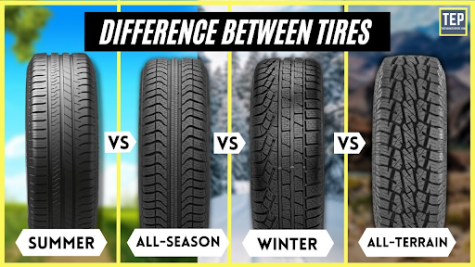Driving in the snow for inexperienced Oregonians
May 1, 2023
Whether it’s your first time driving in the snow, or if you have experience driving in the snow, there’s always precautions needed to take before driving in snow and ice. These conditions are very different from regular road conditions, which is why it’s important to know when it’s safe to drive.
Before driving, evaluate road conditions, and take into consideration that side streets will be worse than main roads and highways. If the snow looks super packed down, or shallow and fluffy, those are good driving conditions.
Deep snow will be hard to drive in, and can sometimes lead to losing control of your car. On the other hand, if it seems to be shiny, oftentimes that’s a sign of ice which is super dangerous, and can lead to spinning out on the road.
Once you’ve looked at the roads, check what type of drivetrain your car has (4WD, AWD, FWD, RWD). If you’re unsure of which one your car has, check your car’s manual or the back of your car.
If your car is 4 wheel drive (4WD) or all wheel drive (AWD) you have the best drivetrain for driving in the snow and the safest one. These types of drivetrains deliver power to all 4 wheels making them the grippiest and the most versatile for slippery terrain.
Front wheel drive (FWD) and rear wheel drive (RWD) aren’t recommended for driving in the snow. If it’s an emergency, front wheel drive is generally better but it’s not the best. Rear wheel drive is not recommended for snow driving at all and can frequently cause you to lose steering control and can lead to your car getting stuck more frequently compared to other drivetrains.
A very common misconception is that all 4 wheel drive and all wheel drive cars can automatically drive in the snow, this is far from the truth. Just because your car is 4 wheel or all wheel drive doesn’t mean you should drive in the snow, your tires determine that factor. If you have all season or traction tires then you are most likely good to drive in the snow.

The photo above shows examples of different types of tires and tire tread. All tires are different in the way they look so they may not match the tires shown in the photo above. Generally tires with deep tread and lots of patches are better for snow and ice.
Once you’ve determined if you can drive in the snow, driving in the snow is much different than driving on clear roads. Remember to maintain 2 -3 times more distance between cars than you usually would in clear conditions.
Braking also is very different from clear conditions, and is very important to know how to do because if done wrong it can lead to accidents.
When braking, brake slowly and brake well ahead of time to allow your car to gradually slow down. Locking the brakes can lead to your car sliding. If you ever feel the brake vibrating or bumping don’t take your foot off the brake, your car is fine, that is a system called anti-lock braking system, or ABS.
To get more technical, ABS is a system in your car that monitors traction in your car and applies different levels of braking to each tire especially when turning. If you had ABS off while turning and you were braking, your front wheels wouldn’t have any grip and you would keep going straight.
When you feel that bumping, that’s ABS kicking in and ensuring that your brakes don’t lock and you don’t go into a skid or drift, don’t be scared of that, it’s a normal thing that your car does.
If you feel like your front wheels aren’t getting any grip, slow down until they regain traction. If you feel like the back end of your car is sliding out, slowly accelerate your car and counter steer to regain traction.
If you’re feeling nervous about driving in the snow, have someone who’s comfortable driving in the snow to drive you to an empty snowy parking lot, try slowly driving around and getting used to the feel of driving on snow and ice.
Once you feel comfortable try driving on flat inactive streets.If possible, when driving on snow and especially ice, avoid steep hills. They can be dangerous, and cause your car to get stuck.
And remember, use common sense when driving in snow and ice conditions. If you feel like you shouldn’t drive or feel unsafe driving, walk instead! Be careful out there.


